UC Gardening Blogs
Local Trees: The Cork Oak
Why are wine bottles tall and narrow? That distinctive shape contributes to the happy marriage...
A Gathering of Lepidopterists at UC Davis
They are legends. Two of those attending the four-day international Lepidopterists' Society...
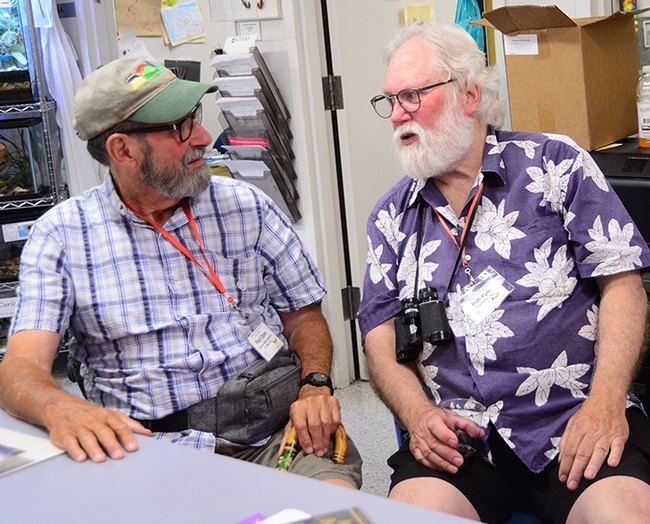
Legendary Lepidopterists Paul Opler (left), an octogenarian, and Robert Michael Pyle, a septuagenarian, chat during their visit to the Bohart Museum of Entomology. It was part of the Lepidopterists' Society's 68th annual conference. (Photo by Kathy Keatley Garvey)
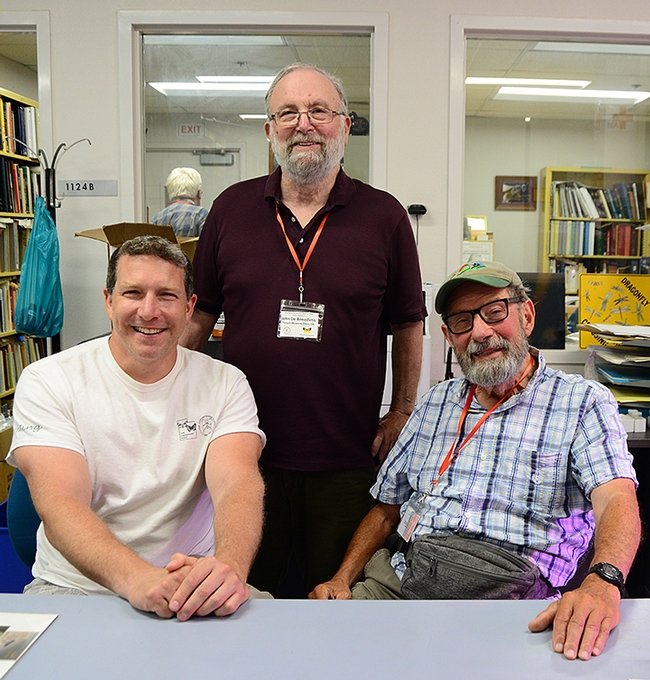
These three entomologists were trained directly or indirectly by Jerry Powell of UC Berkeley. From left are Dan Rubinoff, John De Benedictus, and Paul Opler. (Photo by Kathy Keatley Garvey)
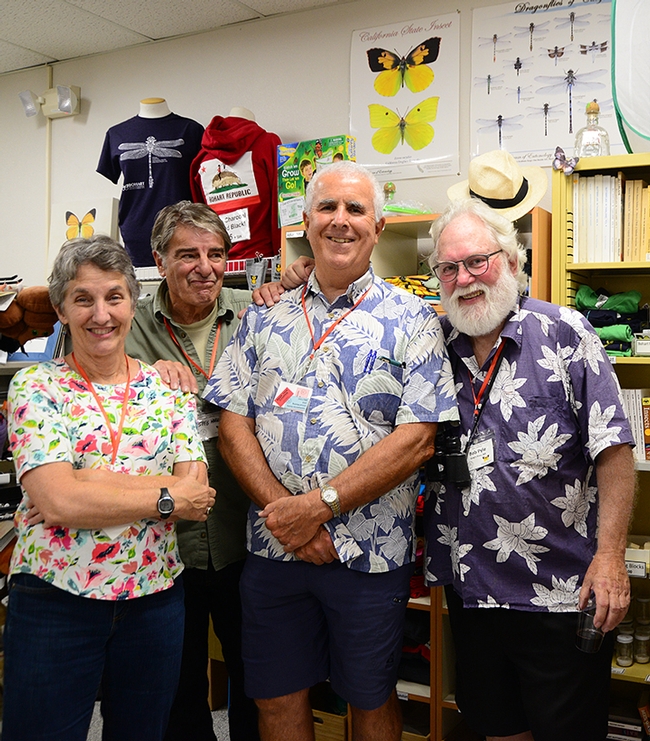
Bohart Museum of Entomology hosts (from left) Lynn Kimsey, Greg Kareofelas and Jeff Smith pose with scientist/writer Robert Michael Pyle (far right), founder of the Xerces Society for Invertebrate Conservation. Kimsey directs the Bohart Museum. (Photo by Kathy Keatley Garvey)
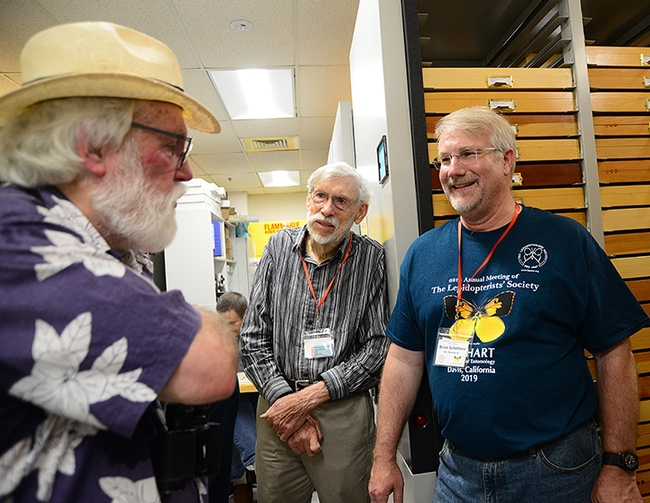
Entomologist Bill Patterson (center) of Sacramento and Lepidopterists' Society president Brian Scholtens, entomology professor at the College of Charleston, South Carolina, discuss butterflies with scientist-author Robert Michael Pyle, founder of the Xerces Society for Invertebrate Conservation. (Photo by Kathy Keatley Garvey)
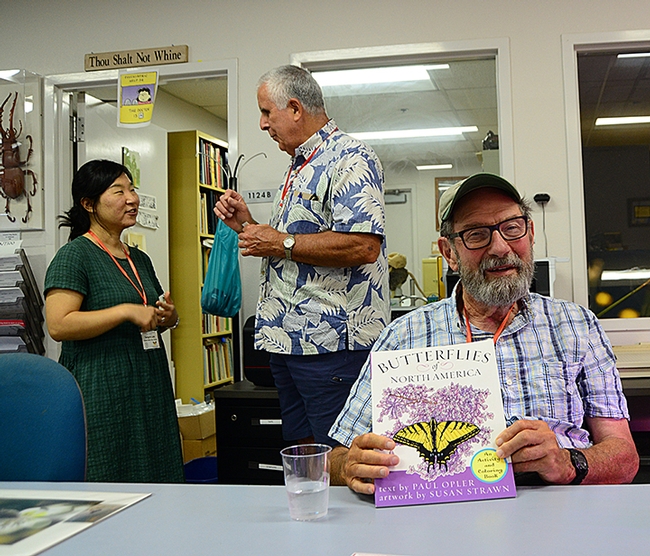
Professor Paul Opler (foreground) is the author of "Butterflies of North America." In back, Jeff Smith, curator of the Lepidoptera collection at the Bohart Museum, chats with Sangmi Lee of Arizona State University. (Photo by Kathy Keatley Garvey)
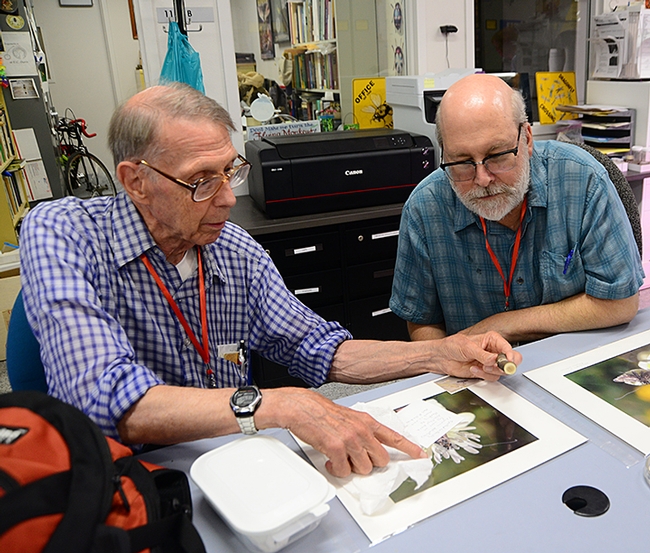
Society members Karl Gardener (left) and William Shepherd confer on a species. (Photo by Kathy Keatley Garvey)
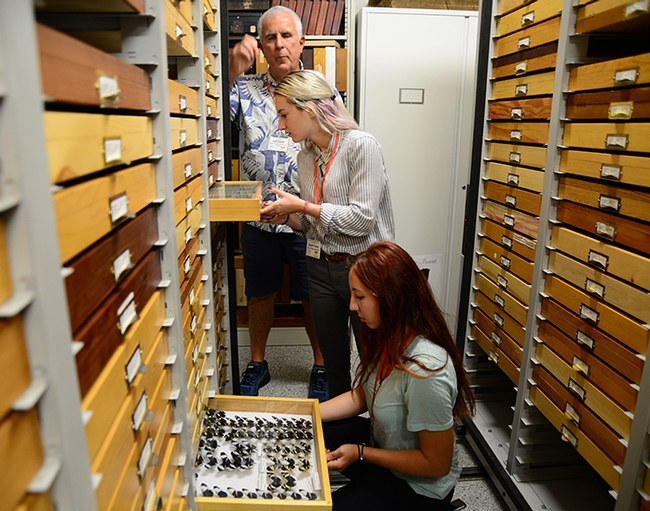
Entomologist Jeff Smith, curator of the Bohart Museum's Lepidoptera collection, explains specimens to Sarah Troup (back) and Shannon Summers, both of the University of Florida, Gainseville. He also served as one of the conference hosts. (Photo by Kathy Keatley Garvey)
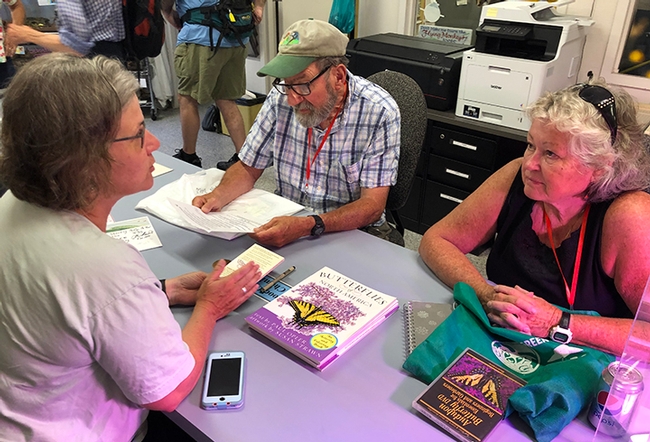
Fran Keller (left), assistant professor at Folsom Lake College, chats with Professor Paul Opler of Colorado State University and his wife, naturalist/nature photographer Evi Buckner-Opler. (Photo by Kathy Keatley Garvey)
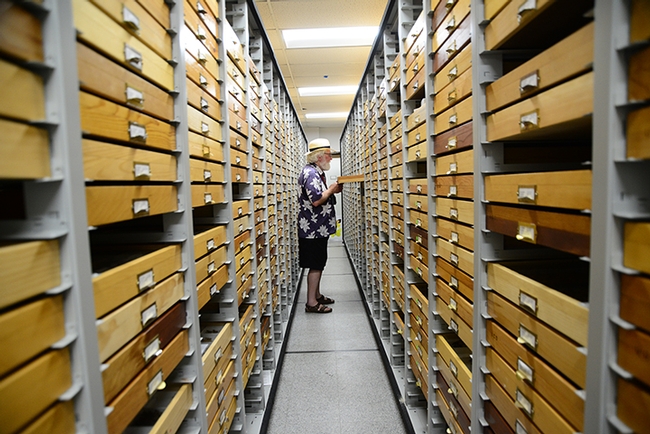
Robert Michael Pyle searches for Magdalena butterfly specimens at the Bohart Museum of Entomology. (Photo by Kathy Keatley Garvey)
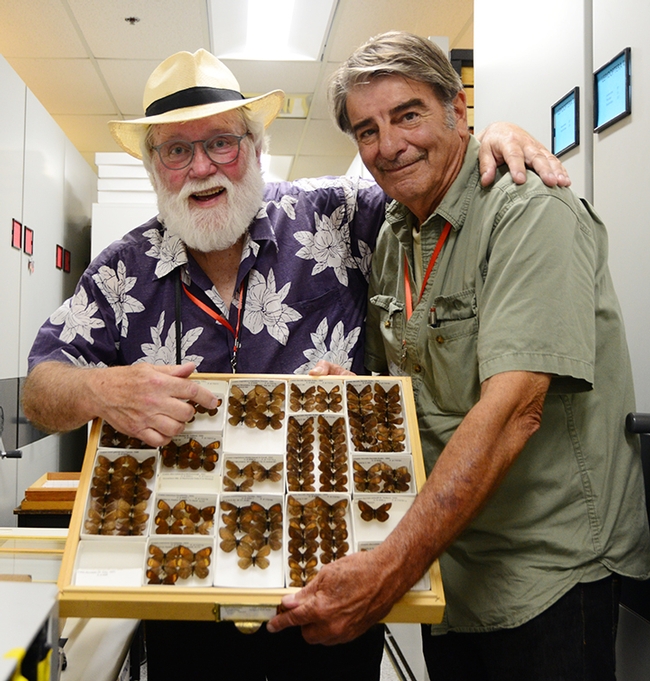
Bohart associate and naturalist Greg Karofelas (right) and Robert Michael Pyle display Magdalena butterfly specimens. Pyle's newly published book features these butterflies. (Photo by Kathy Keatley Garvey)
How Magical Are the Dragonflies
How magical are the dragonflies. They zig-zag through the pollinator garden, a perfect portrait of...
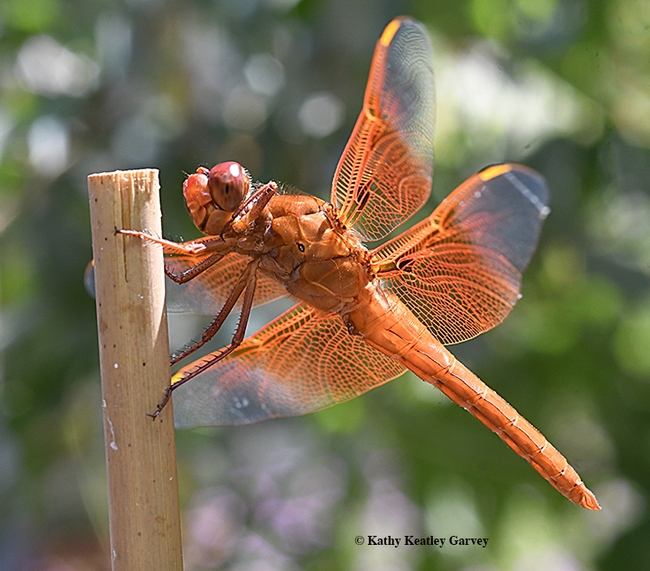
This is a male flameskimmer, Libellula saturata, photographed in Vacaville, Calif. (Photo by Kathy Keatley Garvey)
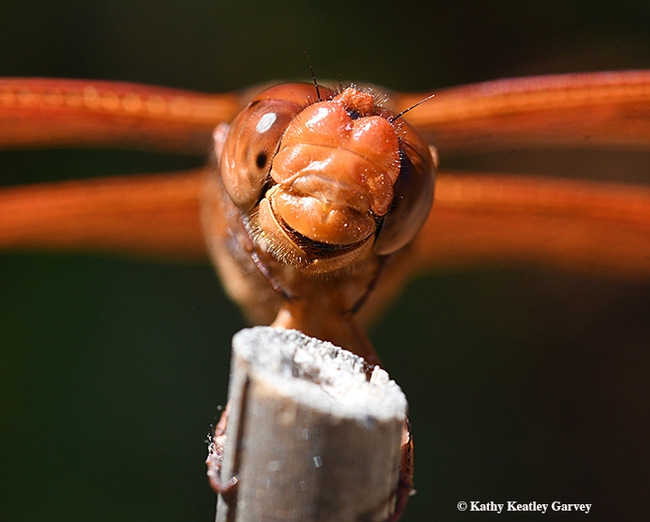
Close-up of a firecracker red flameskimmer, Libellula saturata. (Photo by Kathy Keatley Garvey)
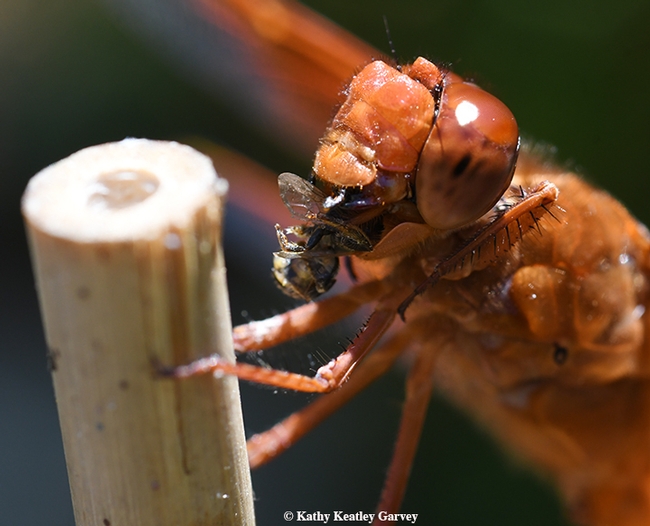
Dinner time! A red flameskimmer, Libellula saturata, munches on a bee, probably a longhorned bee, Melissodes agilis. (Photo by Kathy Keatley Garvey)
Clematis Extravaganza Weekend-Pt 1
One of my fondest early memories as a Master Gardener involves a Master Gardener field trip to the Chalk Hill Clematis nursery near Healdsburg. It was one of my first “big” outings with my newborn daughter and I was excited to get out, see some familiar Master Gardener faces, and learn about plants. I wasn't familiar with clematis at the time, and I was astonished and thrilled by the variety of shapes, sizes, and colors of the species. I purchased an 'Alionushka' clematis with lovely pink, bell-shaped flowers, which thrived for years.
Fast forward fifteen years and Chalk Hill Clematis no longer sells clematis plants to the public and my daughter is taller than I am! I still am interested in clematis but am wary of purchasing more plants due to the adverse hot and windy conditions in my backyard. Still, I thought, it would be fun to wander around a nursery that specialized in clematis, “just to look.” And thus, the “Clematis Extravaganza Weekend” evolved.
It turns out the nearest clematis nursery is outside Portland and that one of my earliest childhood friends, who is quite a gardener, lives near there. She mentioned that there was another clematis garden nearby. Perfect! What could be better than a weekend with an old friend who loves to wander around and look at flowers as much as I do? So, one fine May weekend, my friend introduced me to the Rogerson Clematis Garden in West Linn, Oregon.
Part 1 of this blog will explore the Rogerson Clematis Garden and Part 2 will discuss lessons learned from a talk at Joy Creek Nursery, near Portland, about the types of clematis and growing tips for species that may do better in our warmer Solano County climate.
According to its website, the Rogerson Clematis Garden contains the most comprehensive collection of clematis within a public garden in North America with 1800 individual clematis representing over 800 taxa (distinct species or cultivated varieties).[1] It contains rare plants and the newest hybrids and even has a section for beginners. The founder, Brewster Rogerson, bought a few vines on impulse in 1971 when he was a professor in Kansas and ended up spending the rest of his life collecting specimens from all over the world. He became an expert on clematis and a founding member of the International Clematis Society. Mr. Rogerson retired in Oregon and ultimately his collection found a home at its current location at the historic Luscher Farm, part of Lake Oswego's Parks and Recreation Department. The garden is open to the public daily and there is a small greenhouse that sells plants during limited hours.
The charm of the approximately 2-acre garden isn't just the sheer number and variety of clematis growing, although they are impressive, but also in how the clematis are displayed. The garden shows the clematis in a residential setting, showing how the plants combine with other plants. It also is organized by themed garden beds, which are based on geographic locations (such as the steppe climate areas and Baltic regions), growing conditions, modern varieties, and more. I tend to think of clematis as (mostly) climbing vines or plants that need support, so it was interesting to see how certain vining varieties weren't trained on trellises or supports, but instead were left to scramble on the ground around and through the companion shrubs. The garden also groundcover and shrubby varieties. The garden provided a wonderful opportunity to see a wide variety of clematis incorporated into the landscape in different ways. It's well worth a trip if you are in the area!
Even if a trip to Oregon isn't in your future, the Rogerson Clematis Garden's website has useful information and resources for growing clematis. It includes information on first steps with growing clematis, pruning clematis, and on growing clematis that like full sun or warmer exposures.
[1] https://www.rogersonclematiscollection.org

photos by Erin Mahaney

UNADJUSTEDNONRAW thumb 2a2f1

UNADJUSTEDNONRAW thumb 2a2d3

UNADJUSTEDNONRAW thumb 2a2e5

UNADJUSTEDNONRAW thumb 2a2cf

UNADJUSTEDNONRAW thumb 2a2f9

UNADJUSTEDNONRAW thumb 2a314

UNADJUSTEDNONRAW thumb 2a316
Oh, What a (Moth) Night!
Oh, what a (Moth) Night! It was a family night in more ways than one. Families who attended the...
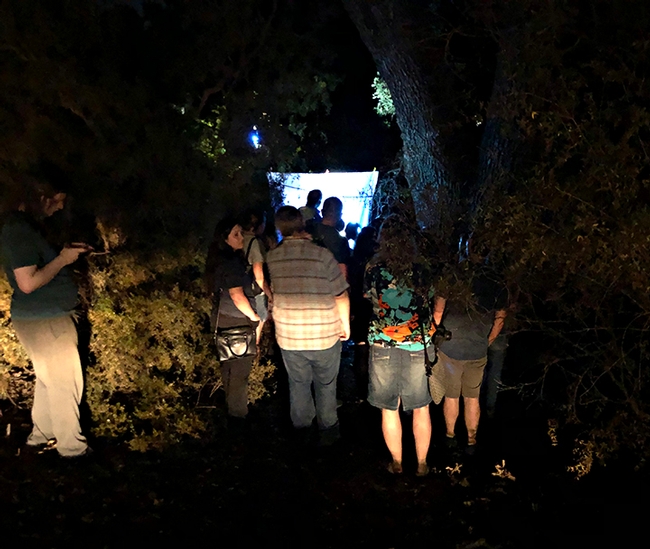
Visitors gather at the blacklighting display just outside the Bohart Museum of Entomology. (Photo by Kathy Keatley Garvey)
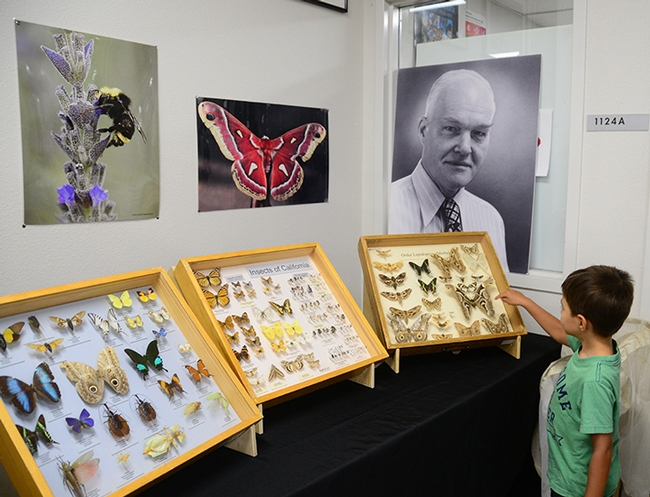
A photograph of entomologist Richard Bohart, for whom the Bohart Museum of Entomology is named, anchors this display. (Photo by Kathy Keatley Garvey)
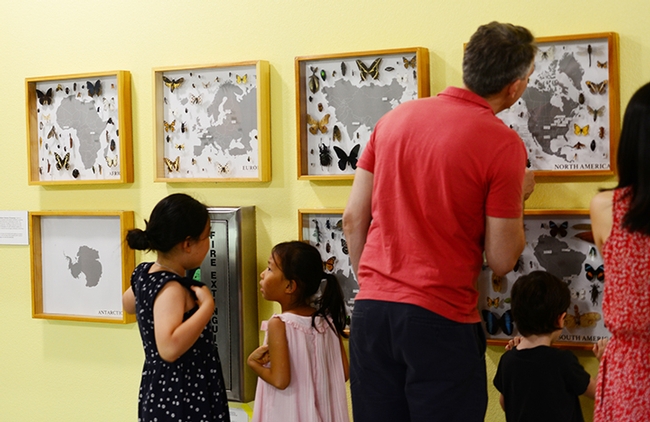
Visitors read the display in the Bohart Museum hallway. (Photo by Kathy Keatley Garvey)
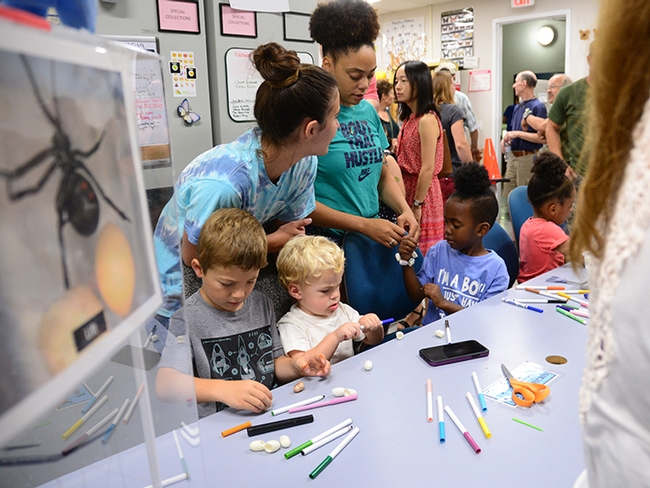
The youngsters work at coloring and stringing together cocoons for bracelets and necklaces. (Photo by Kathy Keatley Garvey)
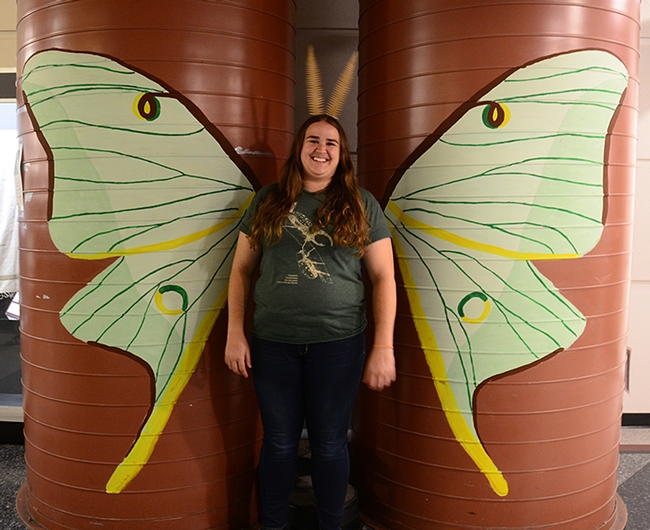
Bohart associate Emma Cluff displays the giant luna moth that she and Kelly Davies created. (Photo by Kathy Keatley Garvey)
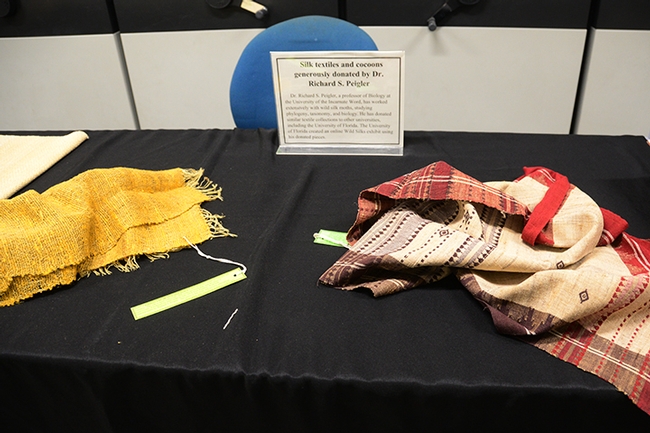
Richard Peigler, a biology professor at the University of the Incarnate Word, San Antonio, Texas, donated the textiles to the Bohart Museum. It is part of its permanent collection. (Photo by Kathy Keatley Garvey)
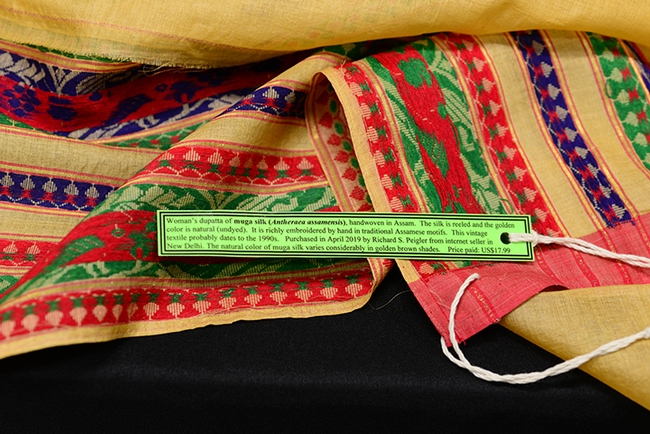
This is a woman's dupatta (shawl) of muga silk handwoven in Assam. It is richly embroidered by hand in traditional Assamese motifs. Moth expert Richard Peigler of San Antonio, Texas, donated this piece and many others to the Bohart Museum. (Photo by Kathy Keatley Garvey)
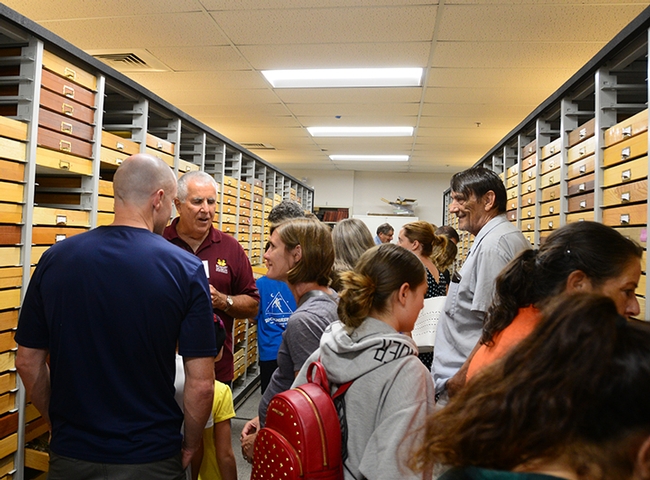
Entomologist Jeff Smith (second from left), curator of the Lepidoptera collection, answers questions from the crowd. (Photo by Kathy Keatley Garvey)



